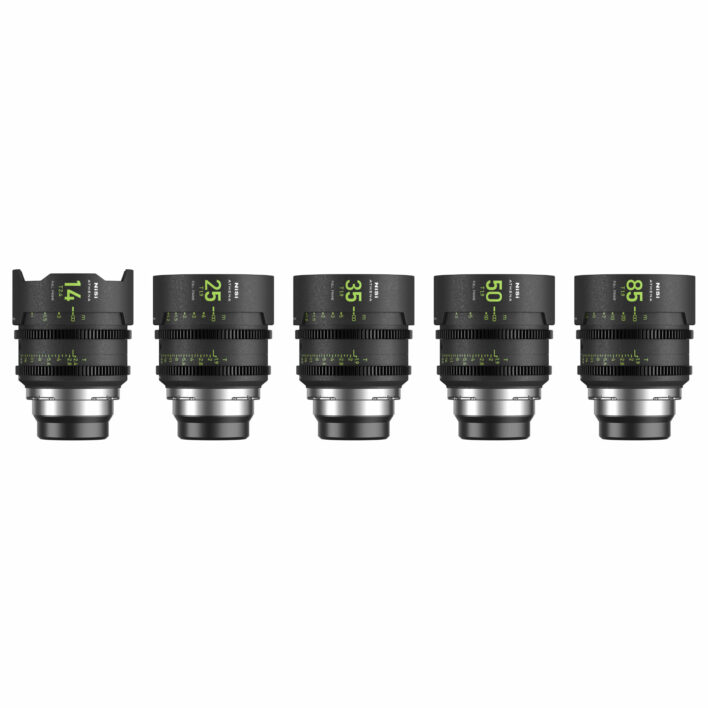
Nisi : Athena Cinema Lenses!
Nov 21 2024
NiSi ATHENA Prime Full-Frame Cinema Lenses is a welcome addition of new cinematography optics offering good quality with a very competitive price tag.
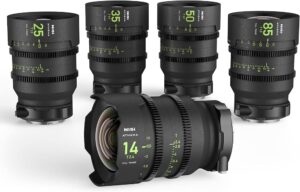
The NiSi ATHENA Prime Full-Frame Cinema Lens Kit represents a refined approach to modern cine lenses, combining thoughtful design, robust engineering, and high optical performance. This series addresses the needs of professional cinematographers while also accommodating budget-conscious indie filmmakers. With precise consistency across the lineup and features catering to both full-frame and larger sensor formats, the ATHENA series is a powerful addition to the toolkit of visual storytellers.
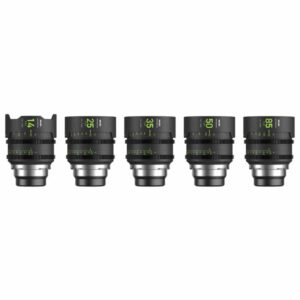
Build and Design
NiSi has leveraged its legacy in optical innovation to deliver a lens series that balances durability with usability. The lenses share a consistent 80mm front diameter and 77mm filter thread, allowing for uniform accessories and quicker transitions between lenses during production. The metal construction offers durability while maintaining a lightweight profile—an important factor for handheld and gimbal setups.
The 300° focus rotation across all lenses ensures precision in focus pulling, a critical requirement for professional workflows. The inclusion of dual-scale markings in feet and meters, etched with flourinated markings for readability in diverse lighting conditions, demonstrates an attention to detail that cinematographers appreciate.
Optical Performance
Optically, the ATHENA primes are engineered to deliver exceptional results. The T1.9 maximum aperture (T2.4 for the 14mm and T2.2 for the 135mm) enables remarkable low-light performance and offers creative control over depth of field. The inclusion of 10 aperture blades ensures a smooth, natural bokeh, enhancing the cinematic quality of out-of-focus areas.
Chromatic aberration is minimal, even at wide apertures, and the lenses exhibit excellent control over contrast and sharpness, maintaining fine details in both highlights and shadows. Focus breathing is virtually eliminated, a critical feature for narrative filmmakers where changes in focus must not alter the framing of the shot.
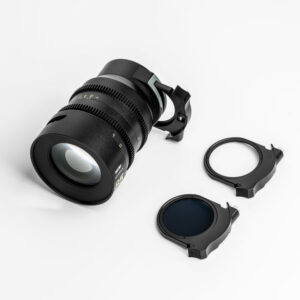
Practical Consistency
One of the standout features of the ATHENA series is its practical consistency. The lenses share:
Uniform weight and size, ensuring balanced setups, especially for stabilizers and gimbals.
Matched aperture and focus ring positions, streamlining transitions between focal lengths without recalibrating accessories like follow-focus systems.
A 46mm image circle, accommodating full-frame and larger sensors, making these lenses future-proof as the industry moves toward large-format cinematography.
Adaptability and Versatility
The lenses are available in PL, E, RF, L, and G mounts, ensuring compatibility with a wide range of cameras, from cinema-grade systems to compact mirrorless bodies. Notably, the E and RF mounts feature drop-in filter slots, while PL mounts include rear screw-on filters, offering flexibility for filtration without additional rigging.
This adaptability extends to their focal lengths, which cover a wide spectrum of creative needs:
14mm ultra-wide for expansive landscapes or dynamic establishing shots.
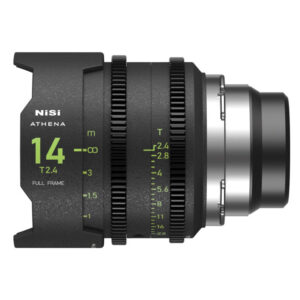
25mm to 50mm primes for versatile narrative work.
85mm and 135mm telephoto lenses, ideal for portraits or capturing intricate details.
Applications in the Field
During real-world testing across a variety of projects—from commercials in New York to narrative shorts in Miami—the ATHENA primes consistently delivered reliable results. The lightweight design facilitated extended handheld shooting, while the uniform mechanics across lenses simplified setups in fast-paced environments.
These lenses excel in productions where flexibility and speed are critical. The combination of compact design and professional-grade optics makes them a natural choice for gimbal work, drone cinematography, and smaller crew setups.
The NiSi ATHENA Prime Full-Frame Cinema Lenses stand out as a sophisticated, professional-grade lens system designed with cinematographers in mind. Their robust build quality, advanced optical engineering, and thoughtful design elements make them a valuable investment for a range of cinematic applications.
For cinematographers, the ATHENA series is not merely a lens kit—it is a toolkit for crafting compelling visual stories. Whether you’re a seasoned professional or an emerging filmmaker, these lenses offer a blend of performance and practicality that elevates your craft.
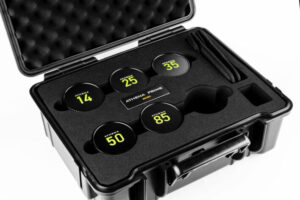
Why New Optics Are Essential in Modern Cinematography
Cinematography has evolved rapidly in recent years, driven by diverse storytelling platforms and formats. Here’s why filmmakers increasingly need innovative and versatile optics:
1. Expansion into Multiple Genres and Platforms
OTT Platforms: The surge in streaming platforms demands cinematic visuals even for medium-budget productions. Shows are now shot in high resolutions (4K and 8K) requiring lenses with superior sharpness, contrast, and color fidelity to maintain quality across diverse display screens.
Marriage and Event Cinematography: Wedding filmmakers increasingly use cinematic techniques like shallow depth of field and bokeh, necessitating lenses that deliver consistent optical performance while being lightweight and practical for dynamic shoots.
Industrial and Documentary Filmmaking: Documentaries often require quick setups in challenging environments, and industrial films demand high-detail capture of machinery or processes. This calls for lenses that are compact, durable, and offer precision.
2. The Shift to Large Format (LF) Cameras
Larger Sensors: The adoption of large-format cameras, such as the Arri Alexa LF, RED Monstro, and Sony Venice, has created demand for lenses with large image circles to fully utilize the sensor’s potential.
Shallow Depth of Field: LF cinematography enhances depth separation, providing a unique, immersive cinematic look. Lenses need to complement this by offering wide apertures with precise focus control.
Wide Field of View Without Distortion: Large-format sensors allow for wide-angle shots with minimal distortion, a capability that relies heavily on advanced lens designs.
3. Technological Advancements in Imaging
High-Resolution Demands: With 8K becoming more common, lenses must resolve fine details without introducing chromatic aberrations or losing micro-contrast.
HDR and Color Science: Modern workflows demand lenses that handle highlights and shadows effectively, providing natural color reproduction to match HDR workflows.
4. Practical Requirements for Modern Productions
Lightweight Designs: Cinematographers now often work with gimbals, drones, and compact rigs, necessitating lightweight and balanced lenses for maneuverability.
Consistency Across Focal Lengths: Productions with quick lens swaps (e.g., commercials and live events) need uniform mechanics and consistent optical performance across lens sets.
Versatility in Mounts: With multi-camera setups becoming common, having lenses that adapt across PL, RF, E, and other mounts increases usability.
5. Growing Audience for Visual Storytelling
The democratization of filmmaking means content creators, from YouTubers to wedding videographers, require professional-grade optics at accessible price points.
6. Lenses for Storytelling Flexibility
OTT Needs Variety: Different genres, from crime dramas to romantic comedies, require different looks. Modern optics need to balance versatility with personality, offering both clinical sharpness and artistic rendering.
Documentary Demands: Portability and low-light performance are critical for capturing spontaneous moments in uncontrolled environments.
Industrial Filmmaking: Precision optics help showcase fine details in product or process shots essential for technical storytelling.
The Craze Over Large Format (LF) Cameras
1. Cinematic Depth and Perspective: LF sensors provide a shallower depth of field and a wider field of view, creating a visually immersive experience that filmmakers love.
2. Resolution and Detail: LF cameras often shoot in higher resolutions, delivering breathtaking detail that appeals to OTT and theatrical productions alike.
3. Future-Proofing: LF workflows are seen as the industry standard for premium productions, ensuring compatibility with evolving display technologies like 8K and HDR.
4. Creative Flexibility: The ability to combine ultra-wide shots with selective focus offers new storytelling possibilities, pushing filmmakers to explore innovative narratives.
By embracing new optics designed for these modern demands, cinematographers are better equipped to meet the expectations of today’s diverse and rapidly evolving visual storytelling landscape.
Article by
CJ Rajkumar
Author/ Cinematographer
